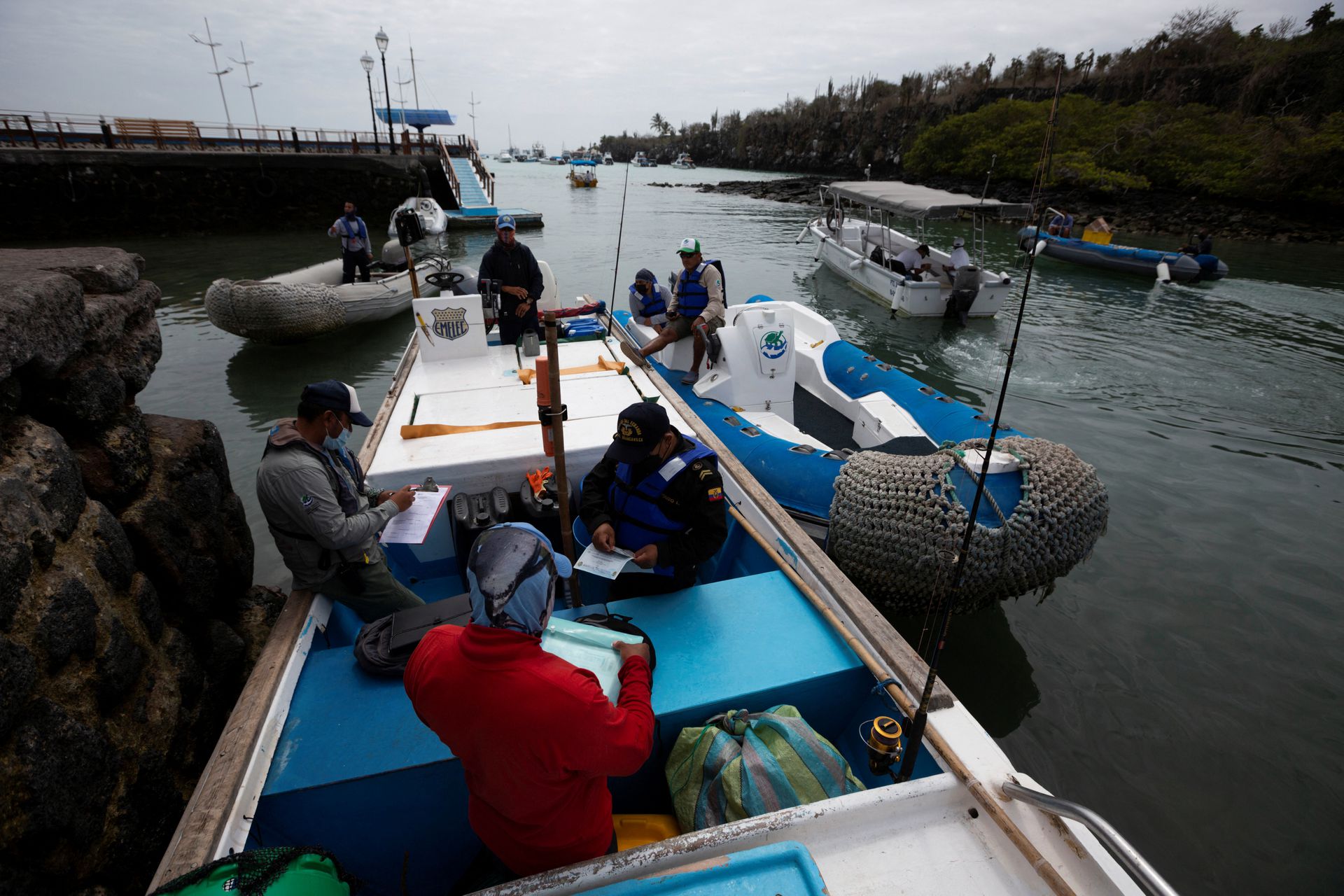By Anna Portella
PUERTO AYORA, Ecuador,(Reuters) – Though he makes a living from the protected waters around Ecuador’s storied Galapagos Islands, fisherman Pedro Asensio has his doubts about an expanded marine reserve created last month by his country’s government.
“What for? If, really, they can’t even protect the first one,” Asensio, 48, said as he sat on a bench by Puerto Ayora’s fish market.
Born in the 15,000-inhabitant municipal capital of the Galapagos’ Santa Cruz Island, Asensio is one of 460 fishers who ply their trade within the 40 nautical miles that comprise the first Galapagos reserve.
Only small-scale, manual fishing by Galapagos residents is allowed within the first reserve, which was created in 1998 and measures 138,000 square kilometers.
The additional 60,000 square kilometers (23,170 square miles) added last month is the first step in a plan by Ecuador, Colombia, Costa Rica and Panama to create a migration corridor between protected areas for species threatened by climate change and industrial fishing.
Fishing is banned outright in half of the new reserve, while in the other half lines with multiple hooks, known locally as palangre, are forbidden, though fishermen are allowed to use manual techniques like scuba diving to catch lobster.
Environmentalists say the expanded reserve will help protect critically endangered species – including hammerhead sharks, whale sharks and turtles.
But locals say enforcement is wrongly focused on them and not the commercial vessels – including a 300-ship fleet from China – which anchor in international waters near the islands.
“At the 40-mile mark we have come across boats from all countries that enter – even Ecuadorean (commercial)boats,” Asensio said.
“We leave this bay and the navy falls on us asking for papers,” said fellow fisherman Mateo Gil, 28.
The campaign for an expanded reserve began after the 2017 seizure of Chinese ship Fu Yuan Yu Leng 999, which was carrying 300 tonnes of illegal fishing spoils, including endangered hammerhead sharks.
The ship’s owners were fined $6.1 million and the captain and crew were sentenced to up to three years in prison.
Galapagos residents and scientists joined forces through the Mas Galapagos group, urging stricter marine species protection and fishing limitations in the 200-mile sovereign water zone around the islands.
“The (previous) marine reserve has been very efficient at protecting coastal species, principally. Species that were on the path to extinction, like giant turtles, have been rescued,” said Mas Galapagos biologist Eliecer Cruz. But protections for migratory species are also key, he said.
Illegal and unsustainable fishing practices are, along with climate change, the top threat to the marine reserve, according to Mas Galapagos studies.
Between 2018 and 2020, 136 unauthorized Ecuadorean industrial fishing vessels were intercepted in the reserve, according to figures from Galapagos national park.
BUOYS AND NETS
And foreign boats also continue to be implicated in potential illegal practices.
In 2020 Ecuador’s then-defense minister said half of a mostly Chinese-flagged fleet of some 342 ships parked on the edges of the exclusive economic area had turned off their location systems making tracking impossible and prompting former President Lenin Moreno to warn the Chinese government that Ecuador would enforce its maritime rights.
So-called “nanny” ships hover just outside the reserve, sending smaller, largely undetectable boats into restricted waters, biologist Cruz said.
Other tactics – including the use of buoys with large underwater netting attached – can prove deadly to endangered species.
“All of this could be solved with fishing regulations that demand all ships have an electronic tracing device or satellite,” said Cruz.
When Galapagos fishermen find the buoys with netting, called “plantados,” they sell them for up to $30.
“They take our resources,” said Eddy Fabricio Asensio, 28, who is Pedro Asensio’s nephew.
Eddy had just returned from a 10-day trip to Marchena Island.
“Ten years ago you’d find good fishing close by. Now you have to navigate more.”
Ecuador’s government said it is confident in existing satellite infrastructure.
“The ‘plantados’ are a legal fishing method. It may be they cross our areas and then go other places. We can’t control that, but when we detect it, we have to go out and confiscate them,” said Environment Minister Gustavo Manrique.
No foreign ship had entered Ecuadorean waters for illegal fishing in nine months, Manrique said in mid-January, at the inauguration of the expanded reserve.
The four countries involved in the new corridor met at the end of January with the United Kingdom’s Environment Minister, who announced a 2 million pound contribution to support the reserve.
Enforcement challenges are myriad, Puerto Ayora naval captain Carlos Vallejo said, not just for the reserve but further afield.
“It’s not 198,000 square kilometers, it’s 1.09 million square kilometers of maritime jurisdiction,” he said.
It takes two days for a boat from Santa Cruz Island to reach the edge of the exclusive economic area.
The navy have had no reports of unauthorized ships in the 40-mile reserve area and its monitoring systems have not detected industrial ships in those waters, Vallejo said, though he said fishermen should report any industrial ships they spot.
If such a ship were detected the crew would be arrested and handed over to legal and national park authorities, he said.
Reporting by Anna Portella Writing by Julia Symmes Cobb; Editing by Lisa Shumaker
(c) Copyright Thomson Reuters 2021.

 Join The Club
Join The Club









